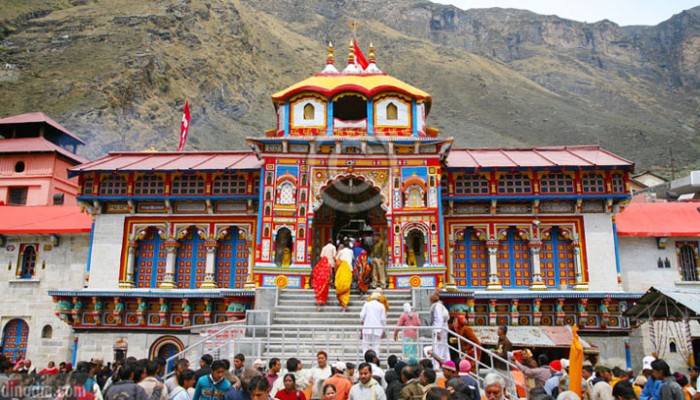Journey to Badrinath
- In Travel
- 08:08 PM, May 03, 2020
- Sudha Raju
In the month of May 2017 after having a divine darshan at Kedarnath, our next destination was going to Badrinath Dham and taking the blessings of Sri Badri Narayana.
After reaching Phata, our next stay was at Auli near Joshimath. Originally we were supposed to go to Ukhimath, from there to Rudraprayag and then come up to Chamoli via Karnaprayag and Nandaprayag as the other route was under repair. But luckily for us, the route from Ukhimath to Chamoli was open the previous day thereby saving us a lot of extra journey and time. That route goes through wilderness and forest area. It was very beautiful but made me a little nervous too. The roads in Uttarakhand have the hills/mountains on one side and valleys and sheer drops on the other side. Some roads have ample space for two vehicles, but on most of the roads two vehicles crossing, is a bit of a juggle. And some parts of the roads have space for only one vehicle. From Chamoli, we went up north to Joshimath and we went to Auli for our stay.
The next day morning we started at 7 am for Badrinath. Heading towards Badrinath, we went past Vishnu Prayag, which is the confluence of Alakananda river and Dauli Ganga river. The roads were good at places but very narrow at some places. Basically the route to Badrinath is more landslide prone.
Tourists were checked at various points and we kept getting text messages about which road to avoid, the advantages of registering and giving our biometrics. We had to go at a slower speed because of the narrow roads and by the time we reached Badrinath, it was 11 am.
Badrinath is the holiest of shrines of Lord Vishnu. Located in the Chamoli district in Uttarakhand, between the Nar Narayan mountain ranges, on the banks of the Alaknanda river, Badrinath Dham is one of the Chaar Dham (4 holy places).
In the 7th century, Adi Shankaracharya found the murti of Badri Narayana made of a black Saligram stone. He installed it in a cave beside Taptkund and in the 16th century the king of Garhwal moved the murti to the present temple. The architecture of the temple is in traditional Garhwal style and is painted brightly. A broad stairway takes us to the main mandapam which leads us to the garbagriha where Sri Badri Narayana is in all his splendor. Coming out we reach the enclosure for Mahalakshmi Ma which has a very powerful aura.
Badrinath is known as Badrikashram in many puranas and is mentioned in the Mahabharata also. Badri is a name for the berries that grow there. Since deva resides there, he is known as Badrinath. According to one katha, Lord Vishnu had performed rigorous austerities in this place. During his intense meditation, he was unaware about the severe weather conditions. To protect him from the heat of the sun, his wife Lakshmi Mata turned into a Badri tree and spread over him. Witnessing this, Lord Vishnu was pleased by her devotion and hence he named the spot after her as Badrikashram.
After the darshan of Badrinathji we came to Brahma Kapal and Tapt kund which are at a lower level than the temple. Tapt kund is hot sulfur springs which are believed to be medicinal. While the temperature at that time was 14 degrees Centigrade, the Tapt kund waters have a temperature of 55 degrees Centigrade throughout the year. My husband and my cousin had planned to get Pind daan at Brahma Kapal for their departed mothers, so they performed the rituals there. It is believed that if Pind daan is done in Brahma Kapal for your departed parents or ancestors, then you do not have to do Pind daan again and the ancestors will be free of rebirth. Overall we were very happy with our Badrinath darshan and all the related rituals being done satisfactorily. We were so happy, that I had forgotten all about Mana which is the last Indian village before the China/Tibet border, which I had planned to see. Mana village is 4 km from Badrinath, situated at a height of around 3219 meters, on the banks of the river Saraswati.
This article is taken from my book ‘ANCIENT TEMPLES My Travelogue’.
India link – https://www.amazon.in/dp/B08799ZXJP/ref=cm_sw_r_wa_apa_i_vzoNEb3314X0R
US link – https://www.amazon.com/ANCIENT-TEMPLES-TRAVELOGUE-SUDHA-RAJU-ebook/dp/B08799ZXJP/ref=sr_1_1?dchild=1&keywords=sudha+raju&qid=1587339732&sr=8-1
Image Credits: Uttarakhand Tourism







Comments